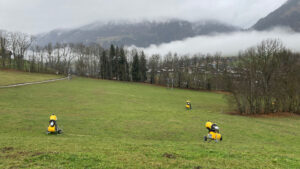Abstract/Description
The European wool sector is strongly embedded into culture and tradition but has significantly undergone economic structural changes linked to globalization processes. This poses substantial challenges not only for sheep farms but for the entire wool value chain. Based on the results of an Interreg Alpine Space project (AlpTextyles), our study explores how Global Production Networks (GPN) debates are reflected at the regional level, utilizing wool in the European Alps as a case study. While global wool production and textile processing have received broad academic attention within GPN debates, the regional level, and particularly de-shored economies are less prominent. Therefore, the wool textile value chain in the European Alps serves as a meaningful example. Using different mapping approaches, we examine the post-decoupling networks in terms of value, governance, and embeddedness. “Regional network hubs” provide platforms for farmers to create critical product masses. More specifically, “strategic embedding” captures such linkages by combining embeddedness and strategic coupling arguments. From a conceptual point of view in economic geography, this research contributes to understanding the nexus between the local and global level, focusing on economic power at the regional level that underpins traditional GPN governance arguments. This provides insights into how regional actors maintain economic stability and growth even when global linkages waver. Practically, our work highlights the economic potential of Alpine wool and demonstrates one possible option to increase local value creation for farmers, SMEs and the textile industry.


